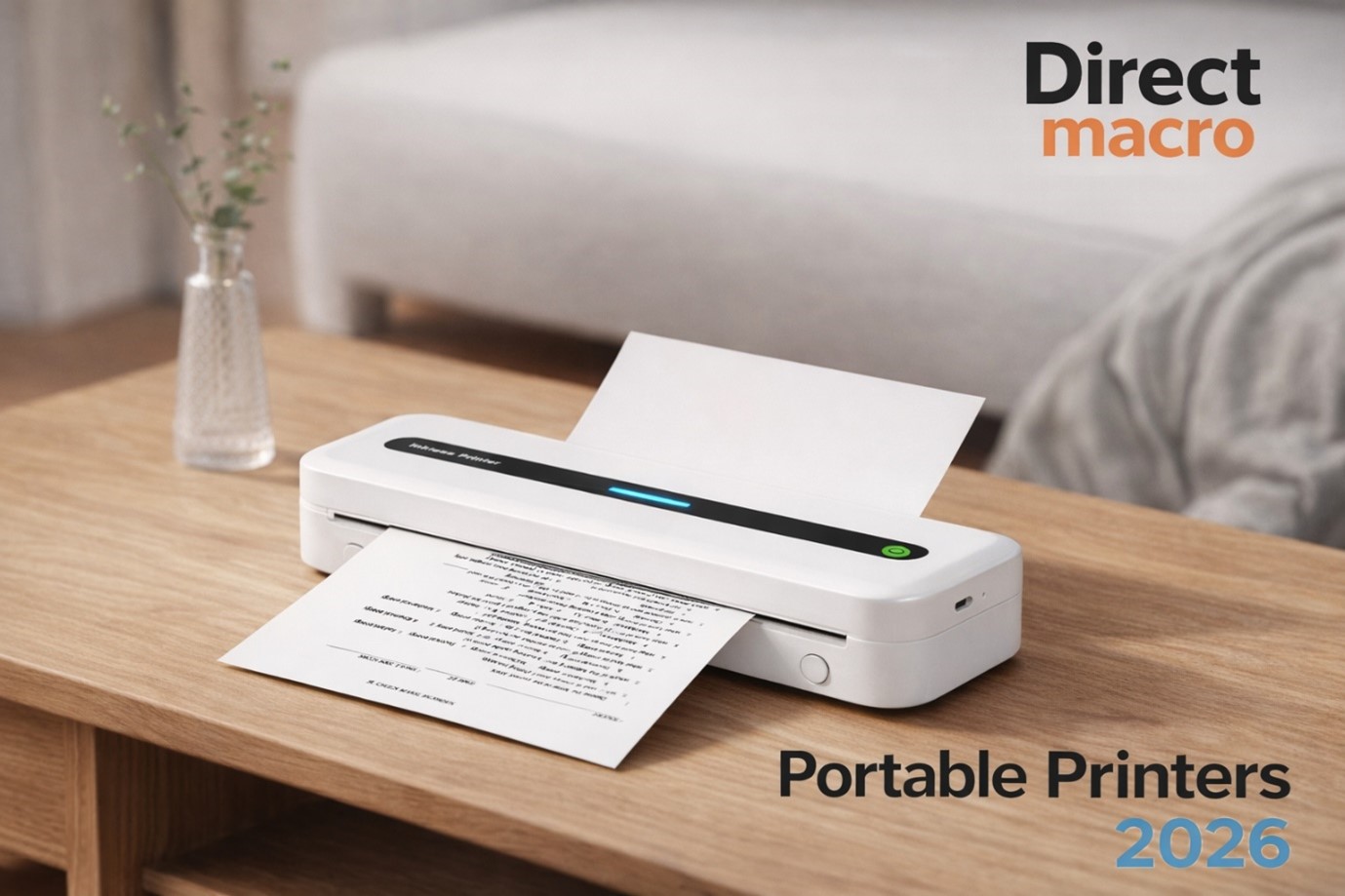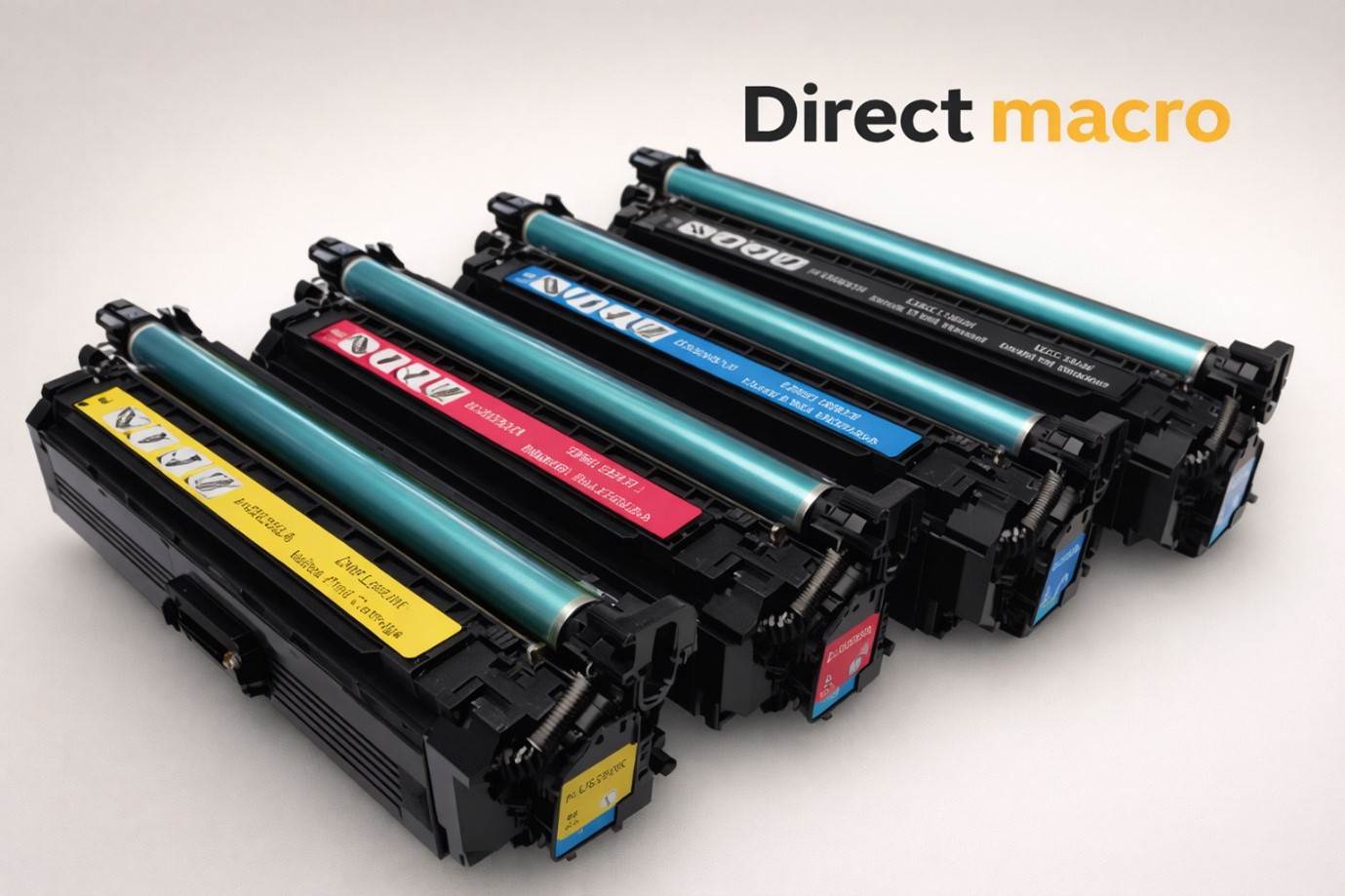NVMe SSD vs M.2 SSD: Explaining Their Differences and Benefits
NVMe SSD vs. M.2 SSD: Yes, let’s settle the debate and differences once and for all. But hey, if you are still not out of the HDD era, and it can be for any reason, then we have the perfect solution for Exploring the Advantages and Disadvantages of Using External Hard Drives. Why external, you may ask? HDDs are mostly used externally due to their massive storage capacity. They can also be used internally with connectivity options ready.
You type NVMe vs. M.2 SSD in the search bar when you want to buy an M.2 SSD or an NVMe SSD and don’t know which one to buy or what they are. You definitely did the right thing because it brought you to Direct Macro. We are here to solve every problem that is M.2 SSD or NVMe SSD.
But before we dive deep into the intricacies and nuances of NVMe vs. M.2 SSD, these two are attributes of an SSD. See, the keyword is SSD here. To understand NVMe vs M.2, you must learn what an SSD is. Not only does reading about an SSD increase your knowledge about computer peripherals, but it also strengthens your buying skills.
What is an SSD?
SSDs won the Popular Choice Award when they were first commercially available in the 1990s. Because of their read and write speed, they are a favorite among the masses. They do it way faster than mechanical hard drives and are reasonably more expensive than HDDs. But hey, this is a price one must pay if you want speed with a reasonable amount of storage space.
They are able to achieve these lightning-fast speeds because they are semiconductor-based storage devices relying on flash memory. Unlike their predecessors in storage technology, hard drives, SSDs do not use magnets to store data. In fact, they use NAND technology. NAND is a type of non-volatile storage technology that does not require power to maintain and store data. The non-volatile technology refers to NVMe drive straight as NV is non-volatile in the abbreviation. Another thing that differentiates these two storage devices is memory chips and moving parts. The SSD has each memory chip made of blocks of memory cells (also known as pages or sectors). These blocks have bits of memory in them to store data. However, conventional hard drives have latency and read time to answer for due to their platters and read/write heads.
A Brief About Key Differences
The M.2 solid-state drive (SSD) is one of the most common varieties, and this post will examine it along with non-volatile memory express (NVMe), the most popular and fastest protocol for connecting SSDs to motherboards.
Despite their frequent interchangeability, M.2 and NVMe denote distinct technologies with complementary but distinct applications. To put it simply:
- M.2 is a form factor enabling high and well-performing storage.
- NVMe is a transfer protocol that determines the communication of the SSD to the computer and enables fast data transfer.
They are used interchangeably because when you connect an M.2 PCIe SSD through an M.2 slot via an NVMe interface, the data transfer speed you get is the fastest.
*Note: No NVMe slot is available on the motherboard, as it is an interface. The NVMe support depends on the motherboard specifications.
Moreover, we will help you to buy the right type of SSD for your specific needs. To do that, we will cover;
- What is a SATA SSD?
- What is an M.2 SSD?
- What is an NVMe SSD?
- Suitable SSD for you!
What is a SATA SSD?
You probably already know about the Serial Advanced Technology Attachment (SATA) computer bus interface if you’re familiar with hard disk drives (HDDs) and solid-state drives (SSDs). Even while they are still the most popular choices for form factors and connections, M.2 SATA and NVMe drives are quickly gaining traction in new PC configurations.
The SATA SSD will have power and SATA connectors, mainly in a 2.5-inch form factor. Even if you buy an external hard drive for your laptop, it will have an internal SATA SSD. The SATA SSD will often be the cheapest option if all other things are equal. This is a fantastic option if your computer is slow because of its hard drive or because you want to add an external drive to read and write data more quickly.
Just a pro tip: It is not recommended to disconnect the external hard drives or SSDs for a longer period of time. Anything over a year will make the external drive susceptible to data loss, and to prevent it, it needs to connect more as it gets older. But you are not reading to find out if you can store your SATA, M.2, or NVMe SSD in the closet. You are willing to spend money to know what is best for you. Worry not; we will educate you enough.
What is NVMe SSD?

You are probably reading this term because it is used commonly. An NVMe SSD refers to an SSD with an NVMe transfer protocol. To understand this, one needs to learn about NVMe first.
NVMe
NVMe stands for Non-Volatile Memory Express, offering efficient communication and blazing NVMe SSD speed through a transfer protocol among a computer’s CPU and SSD. Introduced in 2013, NVMe drives were attached directly to the motherboard through a PCIe slot rather than using a SATA port that older SSDs and conventional HDDs used. SATA was designed and introduced as a technology for before-era HDDs only. The NVMe M.2 upgrade utilizes the low-latency and high-speed capabilities of SSDs. Through the NVMe PCIe slot, it can extract more speed than SATA is incapable of. NVMe drives can accelerate five or six times the rate of a SATA-based equivalent, though this varies by vendor and manufacturer.
After years of being the de facto standard, NVMe storage technology was released in 2011 as a viable replacement for Serial Attached SCSI (SAS) and Serial ATA (SATA). Not only did NVMe significantly outperform its predecessors in terms of storage and technology, but it also played a role in concurrently developing other crucial technologies, such as the IoT, AI, and ML.
Peripheral Component Interconnect Express (PCIe)
Another differentiator between the NVMe vs SSD is how it accesses flash storage through the Peripheral Component Interconnect Express (PCIe) bus. This trick removes the middleman controller while reducing the latency. However, it is not enough; one more virtue that makes NVMe SSD a preferred choice is its ability to run on any type of fabric interconnect. Examples of these are fiber channel and Ethernet, iWarp, RoCEv2, iSER, and NVMe-TCP.
- Parallel Command Queues
With NVMe SSDs, you can run thousands of parallel command queues simultaneously, unlike devices that use the SCSI protocol, which can only deploy one. When using NVMe SSDs, the protocol has no bearing on the connection mechanism. For instance, a single drive can be accessed using a PCIe link running the NVMe protocol using NVMe PCIe connectors.
NVMe Interface Protocol
The NVMe SSDs represent a world that will exist sooner or later where speed and productivity will be primary attributes of good hardware. While some other NVMes may be inserted directly into a standard PCIe slot of the motherboard, just the way graphics cards are put in, others may look more like SSDs in terms of their physical appearance. This placement reflects their ability to operate in high-level and complex environments. Nevertheless, M.2 is currently a standard form factor of most NVMe drives. Through this, both characteristics – compactness and super-fast data transfer – can be achieved.
While cruising the waters of NVMe technology, ignoring the cost implications is not a good move. NVMe drives trade off their amazing speed for a higher price, just as the transition from a mechanical HDD to an SSD was accompanied by an increase in the price of equivalent storage capacities.
Making a critical decision about whether to go for a SATA-based or NVMe-based M.2 drive is vital for those building or upgrading their gaming PCs. The process doesn’t end at the performance output; it proceeds to the compatibility field, too. M.2 slots on motherboards are not universally flexible: they usually have specific cut-outs matched with corresponding drives – SATA or NVMe M.2 drives. It is vital to consider this compatibility since your SSD drive’s protocol greatly depends on your motherboard’s capabilities. Nevertheless, purchasing that expensive NVMe drive and finding out your motherboard is a SATA one is just like buying a sports car without the keys—it’s all the possibilities, but there are a few results. You should not go with a motherboard equipped with just M.2 slots but with the capability of utilizing the whole potential of PCIe data transfer technology.
Read More: Best SSDs 2023: Balancing Cost and Speed from Affordable SATA to Lightning-Fast NVMe
What is an M.2 SSD?

M.2 Solid-state drives, also called Next-Generation Form Factor (NGFF) drives, connect directly to the motherboard without requiring cables. Before, the drives required SATA cables to connect. These modern M.2 SSDs sit directly in the M.2 slot, requiring less fuss and space while increasing speed and power efficiency. Additionally, they are smaller than the 2.5-inch internal SSDs.
Don’t let their small size fool you into believing they cannot hold as much data as their counterparts. Moreover, they are easily installed and compatible with every motherboard with an M.2 slot. You can still use an adaptor card like the Dell BOSS PCI 2x M.2 Slots Controller Card that fits a PCIe slot to connect an M.2 disk, even if your motherboard doesn’t have one.
M.2 SATA SSDs
The SATA form factor is gaining popularity for drives since it is compatible with previous technology. The bandwidth of NVMe SSDs is still higher, but many older PCs lack support for PCIe or NVMe. Therefore, an M.2 SATA interface is the way to go.
Compared to other, more recent connections, SATA SSDs can reach a maximum data transfer speed of 6 Gbps. If performance is your only concern, you should purchase a SATA M2 SSD, the most basic type available. Although the technology is three or four times slower than an HDD, it is still speedy. As an added bonus, SATA M.2 SSDs are less expensive than NVME SSDs, and they’re a fantastic substitute for 2.5-inch drives in motherboards that don’t support them.
M.2 NVMe SSDs
High bandwidth and rapid data transfer rates are hallmarks of NVMe technology. The maximum throughput of a top-tier NVMe drive is more than 3,000 MB/s. Some of the latest models can achieve speeds of 7,500 MB/s. Regarding data transfer speeds, NVMe M.2 SSDs are head and shoulders above the competition. Just looking at the name of NVMe technology—”non-volatile memory”—reveals another appealing aspect of it. According to this standard, NVMe devices do not need power to store data.
NVMe M.2 SSDs bypass other technologies and connect straight to a computer’s CPU using a PCIe socket. This capability allows the drive’s flash memory to function through PCIe instead of the much slower SATA driver. More than three times faster than a SATA M.2 drive, an NVMe M.2 SSD drive may reach an incredible 20 Gbps across the PCIe interface.
What Will Be a Suitable SSD?
Before deciding on a drive, there are a few things to consider. When comparing the various build components, consider your technological limitations, budget, capacity requirements, and speed priority.
Technical Limitations
Because not all older devices have the necessary components for NVMe connections, checking your system’s capabilities is essential before selecting a drive. Make sure you can support numerous PCIe devices by checking that you have adequate PCIe connections. If there aren’t enough lanes, or if they’re all reserved for one specific lane, you could have to switch drives or limit the NVMe drive’s maximum speed connectivity to just one lane.
Budgeting
A non-volatile memory solid-state drive (NVMe SSD) is the way to go if you frequently transfer huge files or demand lightning-fast performance when gaming. Although NVMe drives have recently become more expensive, SATA SSDs were formerly a far more cost-effective alternative. As an illustration, a 1 TB SATA SSD (860 EVO) from Samsung costs $118 on Amazon. However, a 1 TB NVMe drive (970 EVO) from the same brand is listed for a much more reasonable $121.
Storage Capacity
SATA disks typically have capacities ranging from 500 GB to 16 TB. While 4TB and 8TB versions of M.2 drives may be available for significantly more money, the majority of these drives have a 2TB maximum capacity.
Drive Speed
When making your drive selection, remember that 2.5-inch SSDs and SATA M.2 drives offer the same speed; therefore, if you want to boost your performance, you should go with the NVMe-connected drives. While NVMe solid-state drives (SSDs) will undoubtedly outperform SATA drives in terms of speed, you might need to get a new processor just to keep up. One more thing to keep in mind is that different generations of NVMe drives can have varied read and write speeds, so it’s important to check both.
FAQs
Is m.2 faster than SSD?
M.2 is a drive format, not an indication of speed. The NVMe PCIe M.2 SSD supports both SATA and NVME instances. Their PCIe interface makes M.2 NVMe SSDs quicker than traditional SATA SSDs. Meanwhile, M.2 SATA SSDs are superior to 2.5-inch SATA SSDs.
What is the difference between M.2 and NVMe?
M.2 is a type for the form factor of SSDs, which refers to the physical shape and the connection interface. NVMe (Non-Volatile Memory Express) is a storage protocol designed for fast data transfer. M.2 supports both SATA and NVMe modules, with NVMe providing the fastest speed.
Is NVMe the same as M.2?
The short answer is no. NVMe and M.2 are distinctive storage products. NVMe is a high-speed storage protocol, but M.2 is a form factor applicable to both the NVMe and SATA protocols. NVMe SSDs are faster than SATA SSDs regardless of whether they are M.2 or the traditional PCIe form factor.
Is NVMe faster than SSD?
NVMe SSDs are faster than traditional SATA SSDs. NVMe protocol can leverage PCIe lanes to obtain more efficient approaches with lower latency and higher throughput. Therefore, NVMe SSDs appear much more appropriate for jobs that require fast data access.
What is an M.2 slot?
An M.2 slot is a compact interface on a motherboard for connecting M.2 SSDs. It supports SATA and PCIe protocols to offer versatility in a space-saving design.
Conclusion
The combination of NVMe technology and the M.2 form factor allows for the market’s highest data transfer speeds, which is beneficial for both consumers and enterprises. As a storage and transfer capability improvement, NVMe M.2 SSDs are an excellent choice for gamers, video editors, and other users who want to update their PCs. Remember, the most important thing when opting for a new drive is to create a backup of all your data. Any hard drive, no matter the technology, will fail eventually; that is why backing up is paramount. With the knowledge you have acquired in this article, please visit Direct Macro to find a suitable M.2 SSD with an NVMe interface.
Do you need advice on buying or selling hardware? Fill out the form and we will return.

Sales & Support
(855) 483-7810
We respond within 48 hours on all weekdays
Opening hours
Monday to thursday: 08.30-16.30
Friday: 08.30-15.30








